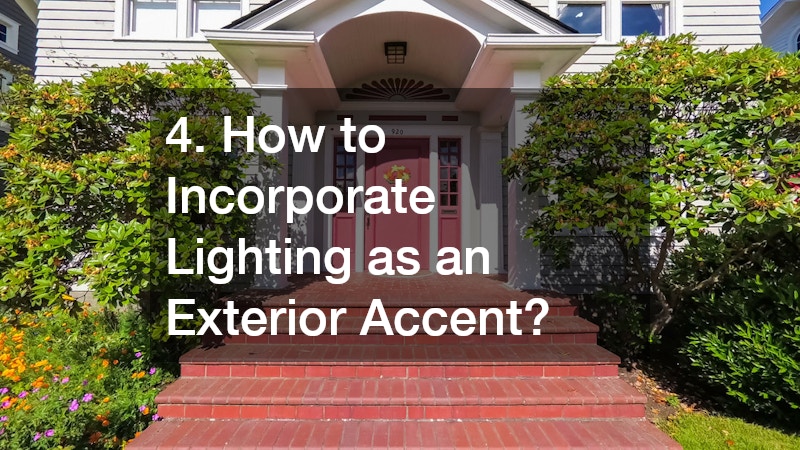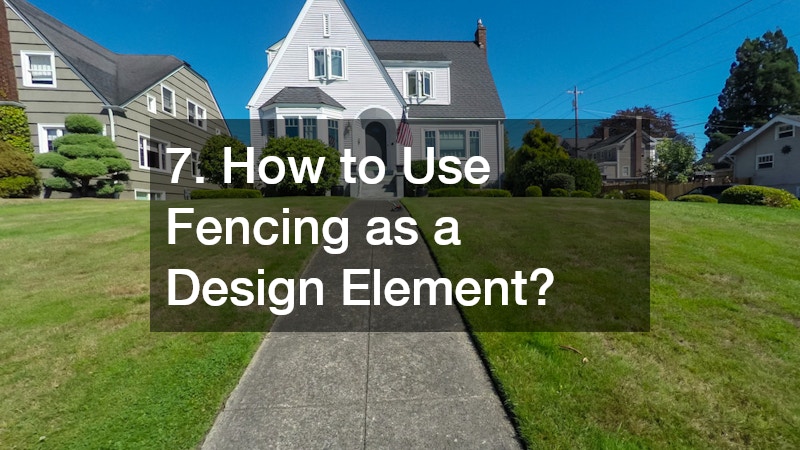10 Exterior Accents for Homes to Enhance Curb Appeal
First impressions matter—especially when it comes to your home. The exterior of a house is the first thing visitors, neighbors, and potential buyers notice, and it sets the tone for what lies inside. This is where exterior accents play a transformative role. They are not merely decorative; they blend function, style, and durability to elevate the overall aesthetic of a property. A well-planned combination of paint colors, landscaping, doors, windows, and lighting can turn a plain façade into an inviting, stylish, and valuable residence.
Curb appeal is often linked directly to property value. According to real estate professionals, homes with thoughtful exterior accents and attractive designs tend to sell faster and at higher prices than those lacking them. In addition, curb appeal fosters a sense of pride and harmony within neighborhoods, contributing to community value and charm. Whether you plan to stay in your home for decades or put it on the market in the near future, enhancing exterior accents is a wise investment.
This article explores ten essential exterior accents that can transform your home’s appearance. Each section dives into practical ideas, the impact on curb appeal, and even how local professionals—from a fence contractor to a concrete company—can bring these accents to life. By the end, you’ll have a detailed roadmap for making your home not only more visually striking but also more welcoming and functional.
1. What Are the Best Exterior Paint Colors for Modern Homes?

Few things change a home’s exterior as dramatically as a fresh coat of paint. Choosing the right exterior paint color is a decision that balances personal style with architectural design and neighborhood context. For modern homes, popular palettes lean toward neutral tones with bold contrasts. Grays, whites, charcoals, and earth tones dominate because they provide timeless sophistication while allowing accents—such as doors, windows, or trim—to stand out.
For homeowners seeking a striking look, pairing a soft base color with darker trim or shutters can create depth and visual intrigue. For example, a warm taupe exterior paired with black trim adds both elegance and modernity. Meanwhile, more daring homeowners might experiment with deep navy or forest green, which pair beautifully with natural wood or metal accents.
Professional input can be invaluable here. A fence contractor often advises homeowners on paint and stain colors that complement fences, ensuring the overall palette feels cohesive. A beautifully painted home that clashes with an untreated or outdated fence can disrupt curb appeal, but aligning the two creates visual harmony.
Ultimately, the best paint color for your home should reflect your personality, enhance architectural details, and mesh well with the surrounding neighborhood.
2. How Can Landscaping Be Used to Complement Exterior Accents?
Landscaping serves as both a frame and an accent to your home. The right plants, shrubs, flowers, and trees highlight architectural features while softening hard lines. Landscaping also creates natural pathways that guide the eye toward focal points such as the front door, porch, or windows.
Strategic design can complement exterior paint colors. For instance, bright flowers can offset darker exteriors, while evergreen shrubs can provide year-round texture against lighter façades. Mulching around trees and flower beds not only protects soil health but also adds a clean, polished appearance. Partnering with a local deck company can further enhance this connection. Decks integrated into landscaped areas serve as transitions from indoor to outdoor living, providing both beauty and function.
Additional landscaping accents include water features, rock gardens, or low-maintenance native plants that require minimal upkeep while maximizing curb appeal. By investing in well-planned landscaping, you create a dynamic backdrop that elevates the impact of every other exterior accent.
3. What Types of Front Doors Enhance Curb Appeal?
The front door is often called the “focal point” of a home’s exterior. It is where the eye naturally lands and where guests receive their first impression of the household. Upgrading or styling a front door can dramatically change the home’s overall personality.
Popular front door styles include bold, painted doors in colors such as red, teal, or black, which stand out beautifully against neutral exteriors. Glass-paneled doors allow light to flood entryways, creating a warm and welcoming vibe. Rustic wooden doors with iron hardware bring a timeless, handcrafted aesthetic that appeals to many homeowners.
A concrete company can also enhance the entryway experience. A sleek concrete walkway, stamped concrete steps, or a custom patio leading up to the door can frame the entry beautifully while ensuring durability. Combined with an eye-catching front door, these elements guide visitors seamlessly toward the heart of the home.
Choosing a front door that matches both your architectural style and your desired level of privacy/security ensures your curb appeal is elevated without sacrificing function.
4. How to Incorporate Lighting as an Exterior Accent?

Exterior lighting is both practical and decorative, playing a major role in safety and style. When thoughtfully incorporated, lighting highlights architectural features, guides pathways, and creates a warm ambiance during the evening.
Popular lighting solutions include wall-mounted sconces flanking the front door, uplighting for trees or architectural columns, and string lights around porches or decks. Solar pathway lights are eco-friendly options that ensure walkways are well-lit without increasing energy bills.
Lighting should also integrate with other exterior features. For instance, a driveway installation paired with embedded LED lights adds a modern touch while improving visibility at night. Similarly, accent lighting along fences or garden beds ties together landscaping and architectural details.
By investing in quality lighting, you extend the beauty of your exterior accents beyond daylight hours, allowing your home to shine no matter the time.
5. What Role Do Windows Play in Exterior Home Design?
Windows influence both a home’s aesthetic and functionality. They shape the exterior façade while also impacting natural light, ventilation, and energy efficiency inside. From a curb appeal perspective, window styles and frames add visual rhythm and balance.
Large picture windows or bay windows create grandeur, while smaller, symmetrical windows provide structure and charm. The choice of trim color around windows can highlight architectural details, making them stand out as design elements.
Even industries seemingly unrelated to design, such as forklift service providers, understand the importance of precision and balance in construction. Similarly, homeowners must consider the proportion and alignment of windows to ensure visual harmony. Adding shutters or flower boxes beneath windows can further enhance their role as exterior accents.
Ultimately, windows are not just functional openings; they’re design opportunities that connect the indoors with the outdoors while shaping curb appeal.
6. Ideas for Enhancing Porch and Entry Design
The porch and entryway set the stage for your home’s personality. Even modest porches can be transformed into inviting spaces with thoughtful accents.
Key ideas include adding seasonal décor, potted plants, or a stylish doormat. Porch railings and columns painted in complementary colors can reinforce architectural style. Furniture such as benches, rocking chairs, or small tables creates an inviting atmosphere, signaling warmth and hospitality.
A junk removal service can play an unexpected role here. Clearing away clutter, old furniture, or unused décor ensures the porch remains clean and appealing rather than overwhelming or disorganized. By decluttering, the beauty of your chosen accents takes center stage.
Incorporating symmetry—such as matching planters or sconces—can create a sense of order and elegance. Whether grand or simple, a well-designed porch elevates your home’s exterior charm instantly.
7. How to Use Fencing as a Design Element?

Fences serve more than practical purposes like privacy or security; they are significant design elements that frame your property and contribute to its curb appeal.
Different materials create different aesthetics. Wooden fences provide warmth and rustic charm, vinyl fences offer low-maintenance elegance, and wrought iron fences bring timeless sophistication. Coordinating fence style with exterior paint colors and landscaping creates a cohesive look.
Local roofers might even advise aligning fencing colors with roofing materials, as these two elements often dominate the exterior palette. For example, a dark metal roof may pair beautifully with black iron fencing, creating continuity across the property.
Adding accents such as decorative post caps, integrated lighting, or vines growing along fence panels further enhances their role as design elements. A well-planned fence frames the home like a piece of art, guiding the eye toward its focal points.
8. The Impact of Roofing Choices on Home Aesthetics
The roof is one of the largest visible surfaces on a home, making its style and material choice critical for curb appeal. Shingles, metal panels, slate, or clay tiles all bring unique aesthetics that can either complement or clash with the home’s design.
Color is equally important. Darker roofs add drama and contrast, while lighter roofs create an airy, welcoming feel. Textured roofing materials also add depth and sophistication. Beyond looks, roofing contributes to energy efficiency and durability, factors that increase property value.
Working with local siding contractors ensures that roofing choices coordinate seamlessly with siding materials and colors. Together, these two elements dominate a home’s exterior design, so careful planning is crucial.
A thoughtfully chosen roof not only protects your home but also elevates its style, ensuring long-lasting curb appeal.
9. How to Choose and Style House Numbers?
House numbers may seem minor, but they play a surprisingly important role in exterior design. They serve both practical and decorative purposes, ensuring your home is easy to identify while contributing to its personality. Clear, stylish numbers not only help delivery drivers, emergency responders, and visitors locate your home but also create a polished finishing touch that ties your entire exterior together.
Modern homes often feature sleek, metal numbers in brushed nickel, stainless steel, or matte black, while more traditional homes may suit ornate plaques, vintage brass styles, or hand-painted ceramic tiles. For rustic or farmhouse designs, wooden backplates or distressed finishes provide character and warmth. The font choice also matters: bold, clean lines convey modernity, while script or serif fonts bring timeless charm.
Placement is equally important. Numbers can be mounted on the front door, positioned above the garage, attached to a fence post, or displayed on a mailbox. They should be large enough to read from the street and placed at a height that draws attention without overwhelming other design features.
Pairing house numbers with landscaping enhancements can be highly effective. For example, a mulching service can create neat, clean planting beds near the entry, making house numbers mounted nearby stand out against a tidy backdrop. Adding lighting ensures functionality at night, with options like solar spotlights, backlit numbers, or overhead sconces that provide both safety and aesthetic appeal.
10. What Are the Best Practices for Maintaining Exterior Accents?

Even the most beautiful exterior accents lose their charm without proper maintenance. Regular care ensures longevity and preserves curb appeal.
Best practices include repainting trim or siding as needed, sealing wooden elements like decks or fences, and power washing surfaces to remove dirt and mildew. Landscaping requires seasonal upkeep, from mulching to trimming shrubs. Lighting fixtures should be checked for functionality and cleaned of debris.
Professional help is often essential. Stone work services, for instance, can repair or refresh stone pathways, patios, or retaining walls, ensuring they remain sturdy and attractive. Similarly, hiring local contractors for seasonal maintenance ensures every accent—from roofing to fencing—remains in top condition.
Routine inspections and timely repairs save homeowners money in the long run while keeping exteriors polished and appealing year-round.
Exterior accents are more than decorative touches; they are powerful design tools that transform a house into a welcoming, stylish, and valuable home. From the choice of paint colors and landscaping to the selection of doors, windows, lighting, and roofing, every detail contributes to curb appeal. These accents not only enhance property value but also reflect the homeowner’s taste and pride of ownership.
By working with professionals like fence contractors, local deck companies, concrete experts, and stone work services, homeowners can ensure their vision comes to life with durability and precision. Maintaining these accents through regular care further guarantees lasting beauty.
In the end, investing in exterior accents is an investment in your home’s future—creating a property that turns heads, fosters pride, and stands the test of time.
